Holly: [Planting, Care, Irrigation, Substrate, Pests and Diseases]
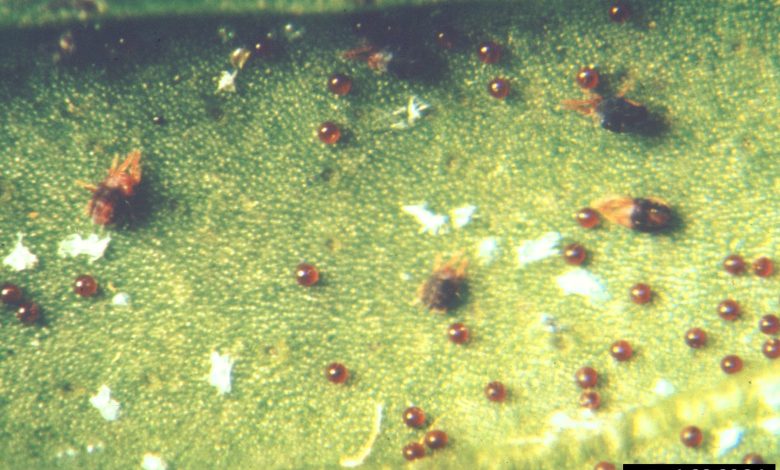
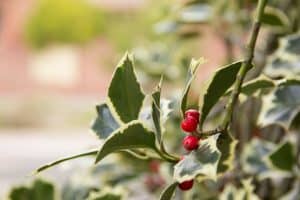 Holly is one of the most beautiful ornamental plants to have in the garden.
Holly is one of the most beautiful ornamental plants to have in the garden.
The contrast between its dark green leaves and the small bright red berries that are produced in winter, makes for a very striking image. In addition, the shape of the leaves breaks with the common structure that we know and that adds an exceptional level.
Would you like to enjoy a holly in your garden? Anyone can, it is only necessary to learn a little about its cultivation and care.
Can you come with us?
Important points when planting a Holly
- When? Between March and May.
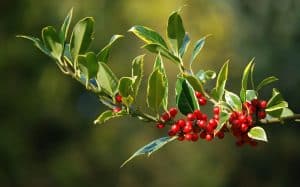
- Where? In semi shade, sheltered from the wind, moist soil.
- How do we prepare the land? With plow and organic matter.
- How should we water? By drip.
- How often do you have to water? Weekly in spring and summer. In autumn and winter it is not necessary.
- What pests and diseases do they have? Mites, moths, fungi.
Holly Characteristics
Holly is a shrub that is capable of reaching up to 15 meters in height. Its main characteristic is that it produces fruits during the winter, just when the other trees are at rest and the garden has a sadder color.
 Holly leaves are very characteristic because they appear jagged all the way around and are also very bright.
Holly leaves are very characteristic because they appear jagged all the way around and are also very bright.
Another interesting detail is the trunk, which is not brown like in most species but rather gray.
The branches vary in color depending on their age. The newest ones are presented in green while the oldest ones are grey.
It also produces flowers that appear during spring and summer. These are quite small and their color is white, pink and sometimes a little purple.
Due to all these conditions it is easy to realize that it is a species that prefers low temperatures.
Careful with this:It is important to know that this plant has toxic components for humans, so its consumption should be avoided.
However, this condition is only for humans because some species of birds consume its fruits without inconvenience.
Where should we plant the holly?
It is very important that the place chosen to plant the holly meets all of the following characteristics:
- Humidity: it needs to have a high level of humidity and to maintain it, even if it does not get waterlogged. Soils that tend to compact should also be avoided.
- Shady place: a space where it does not receive abundant sunlight is best, perhaps a little each day but without abusing it.
- Wind protection: to keep the holly in optimal conditions, it must be located in a place where the wind cannot affect it.
- pH level: due to its own conditions, it is preferable that the soil is slightly acidic.
When should holly be grown?
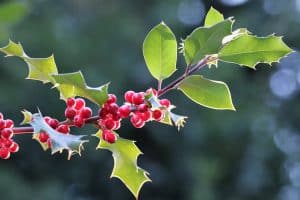 In spring, between the months of March and May preferably. It is also possible to do it in the fall.
In spring, between the months of March and May preferably. It is also possible to do it in the fall.
This process will be carried out after the stratification of the seeds, which has a duration of one year.
How do we prepare the land?
 The preparation of the land represents an important part in the planting of the holly and it is necessary to work it with movement and organic fertilizers (such as compost or manure).
The preparation of the land represents an important part in the planting of the holly and it is necessary to work it with movement and organic fertilizers (such as compost or manure).
It is important to loosen the soil by digging a deep hole and moving the soil while providing compost to improve its structure. It is also essential that the excavated hole is larger than the root ball to be planted.
This will help the roots settle better and get enough aeration.
How to plant a holly step by step?
Planting holly from seed is a difficult process and that is why it is recommended that it be planted from a plant.
Plant from seedling
- Seedlings are sold at farm stores and are easy to grow. It is important that at the time of transplanting to the ground it is covered with some coffee leftovers because it provides good nutrients.
- The hole to place the base of the plant should be two or three times larger than the size of the plant.
- The earth that will be applied to cover the base must be added until it is half full, then moisten and complete with the rest of the earth.
- An important step is to apply a certain amount of pressure to prevent air bubbles from getting inside.
sowing by seed
- Sowing by seeds is given from the ripe fruit which will be collected at the end of the winter season.
- The berries need to be split open to extract the seeds and wash them a bit before placing them in a seedbed.
- This seedbed must contain moist sand as a substrate and, with it, a stratification work will be carried out.
- Unlike other seeds, the stratification will last for a year and the seedbed must be kept in a dark and humid place, such as the refrigerator.
- Then, you will have to wait until next spring to put them in a pot or in the garden and let them germinate.
- The following steps will be similar to those already mentioned in the case of using nursery plants.
If you want to dig deeper, you can see: Holly Cuttings.
What care does the holly need?
Manure and fertilization
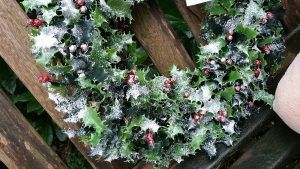 One of the main care of this species is the fertilization that must be done from the first year of life. The most advisable thing is to follow a slow-release annual fertilization pattern that will be carried out from spring.
One of the main care of this species is the fertilization that must be done from the first year of life. The most advisable thing is to follow a slow-release annual fertilization pattern that will be carried out from spring.
Irrigation
As for irrigation, in the autumn and winter seasons it is not necessary but in spring and summer it needs at least once a week.
pruning
Pruning should be done in order to remove affected parts, improve the level of circulating air and reduce the chances of disease.
To know more: the pruning of the holly.
What pests and diseases does it have?
Holly is not prone to serious disease. Some of fungal origin only cause bad appearance. To combat these pests we recommend neem oil or potassium soap.
As for pests, the issue is different since it is usually attacked by mites, scales and moths.
Holly is an ideal species to decorate the garden in winter and, in fact, is widely used for Christmas parties.


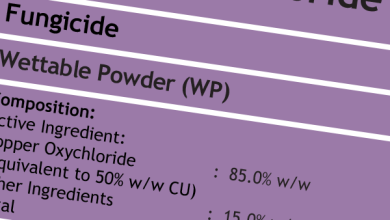

![Photo of Yellow Daisies: [Characteristics, Cultivation, Care and Disadvantages]](https://www.complete-gardening.com/wp-content/uploads/2022/08/yellow-daisies-characteristics-cultivation-care-and-disadvantages-390x220.jpg)